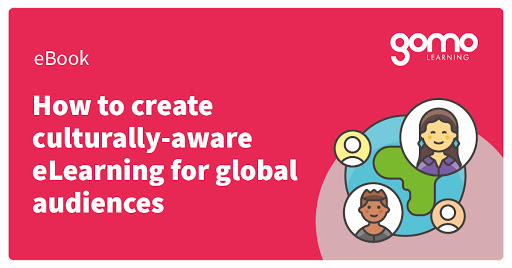
Discover culturally-aware best practices for global eLearning authoring in new Gomo ebook
‘How to create culturally-aware eLearning for global audiences’ examines the planning requirements of scaling courses to global audiences and the many localization challenges involved.
The team behind Gomo Learning, the award-winning cloud-based, multi-device eLearning authoring platform, has released a new ebook collecting insights into the unique challenges of scaling eLearning course creation in global businesses.
The ebook, ‘How to create culturally-aware eLearning for global audiences’, covers both the principles of localization that need to be applied to relevant and relatable global eLearning courses and the specific features that learning designers should expect from their authoring tools in order to enable robust international content support.
With recent global events increasing remote working—and in turn, demand for eLearning—global organizations increasingly need to embrace tools and approaches that bring their teams into closer (though purely virtual) proximity. Drawing on experience from individuals across Learning Technologies Group (Gomo’s parent company), who are working daily with a range of global customers, the ebook suggests ways of making content engaging for everyone while being effortless to produce.
“Translating content into other languages in your organization is just one part of a properly globalized approach,” says Gomo Customer Success Manager, Simon Waldram. “Businesses often ignore subtle localization issues that can make readers in other offices feel overlooked. Everything from the formatting of numbers to the power relationships conveyed in stock photography should be reconsidered. Teams also need to carefully consider how to implement this extra level of accuracy through new methods of planning and the right authoring tool features.”
Key tactics and features discussed in the guide and its accompanying infographic include:
- How local expertise is a critical factor in understanding how your courses will be interpreted and received
- Whether to take a centralized or regional approach to content creation
- Translation processes and considerations for full localization
- Relevance of content, imagery, and other media
- Why your authoring tool needs proper language selection, XLIFF compatibility, and right-to-left language and design support
- How cloud-based authoring massively simplifies global workflows and collaboration
Click here to download a copy of the ‘How to create culturally-aware eLearning for global audiences’ ebook.
The companion infographic visually showcasing five areas of regional difference is also available here.
– Ends –


